The very last parade of the Western Allies & Soviets (PHOTOS)

Shortly after Nazi Germany was defeated, each Allied country held at least one grandiose parade to commemorate this remarkable achievement. Accompanied by hundreds of military equipment, tens of thousands of soldiers marched on the streets of Moscow, New York, London and liberated Berlin in solidarity.
However, speaking of the common celebrations between the Allies, things weren’t going so well. Inspired by the glorified commander Georgy Zhukov, the joint parade in German capital on September 7, 1945, had to be a remarkable event. It indeed gathered 5,000 soldiers from the legendary military formations that assaulted Berlin, landed in Normandy, fought in Ardennes and North Africa, liberated Poland and France.
However, the parade was marred by the ignorance of the top commanders of the Western Allies (Dwight Eisenhower, Jean de Lattre de Tassigny and Bernard Montgomery), who at first accepted the invitation and then refused to come. Less important generals were sent instead.
After this “forgotten parade”, as it ended up being known in history, the Allied soldiers jointly marched on November 11 the same year to honor the opening of the huge Soviet war memorial in the Tiergarten locality in central Berlin.
On May 8, 1946, the very last parade of the Allies was held. It became even more forgotten than the previous ones: not many details remain.
What we do know is that the Soviet, French, American and British soldiers marched across the Tiergarten, from Brandenburg Gate near half-destroyed Reichstag, and ended at the War Memorial. There they were greeted by the commander of Soviet troops in Berlin Major General Alexander Kotikov and his colleagues: French General Charles Lançon, U.S. Major General Frank A. Keating and British Major General Eric P. Nares.
No aviation or military equipment participated in this modest parade, which involved just hundreds of soldiers. One of the last joint events of the victorious countries was soon forgotten, as the nations were already preparing for the Cold War confrontation. In the years to follow, Soviet troops marched across the Berlin streets alone...
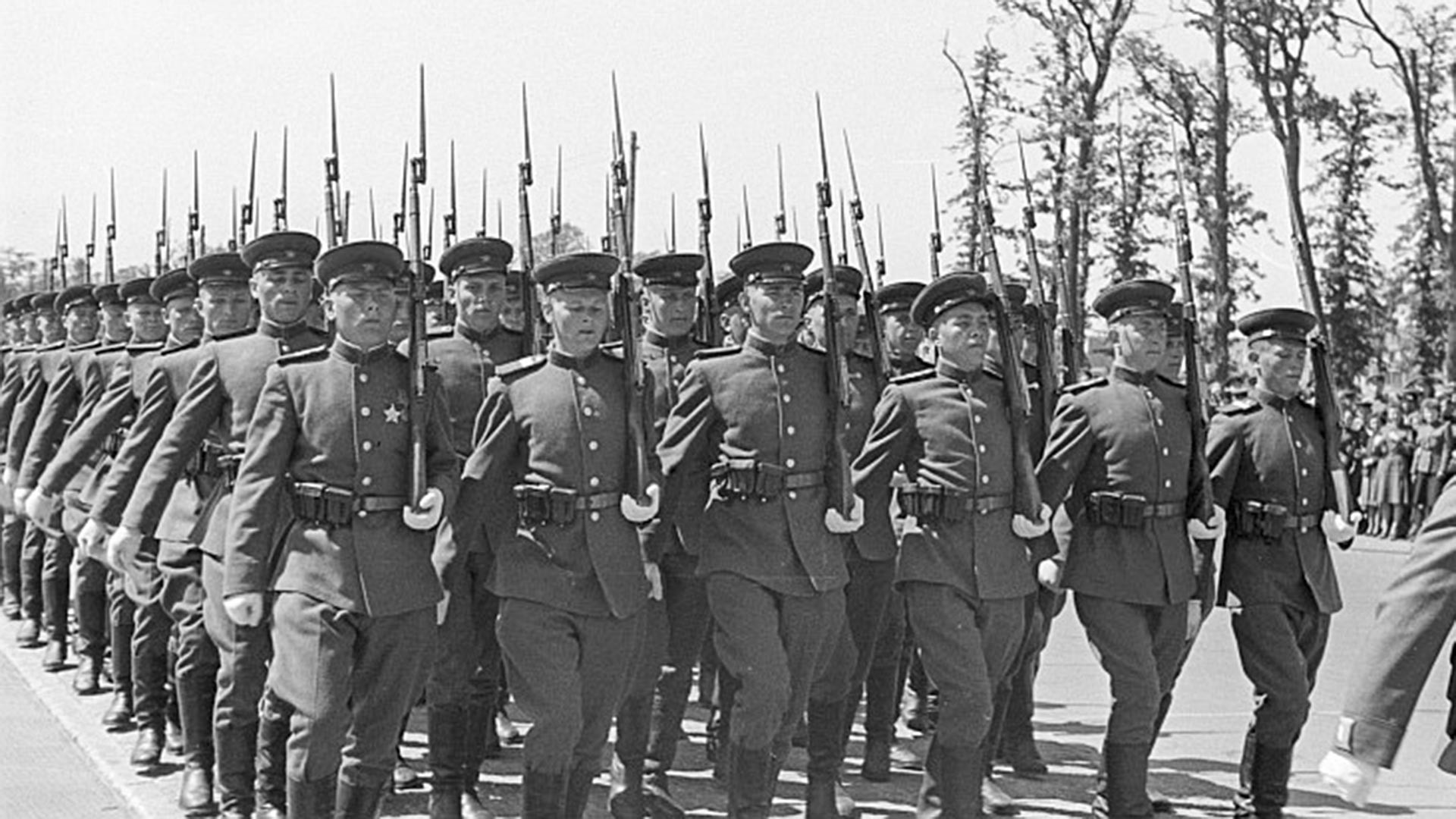
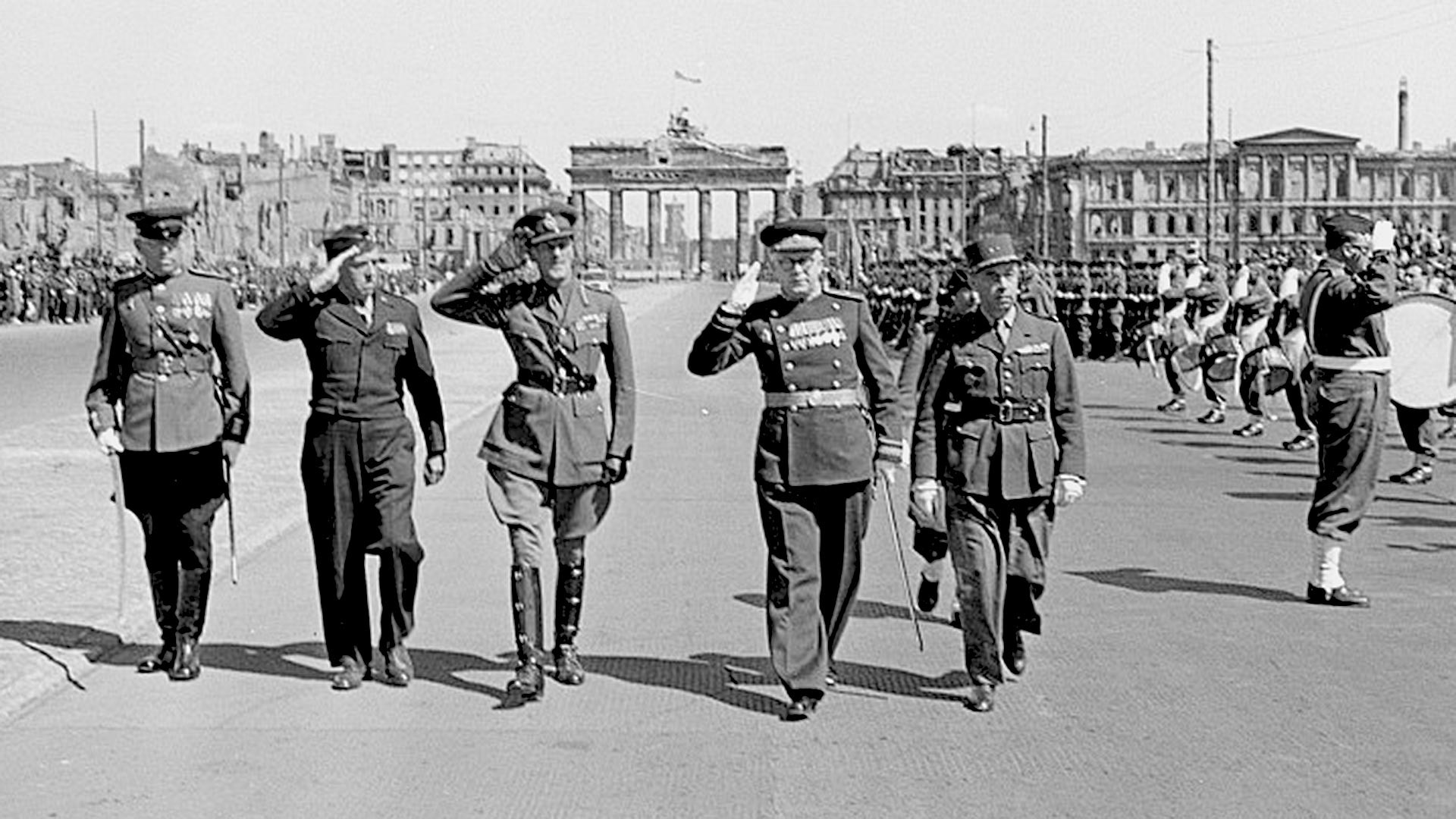
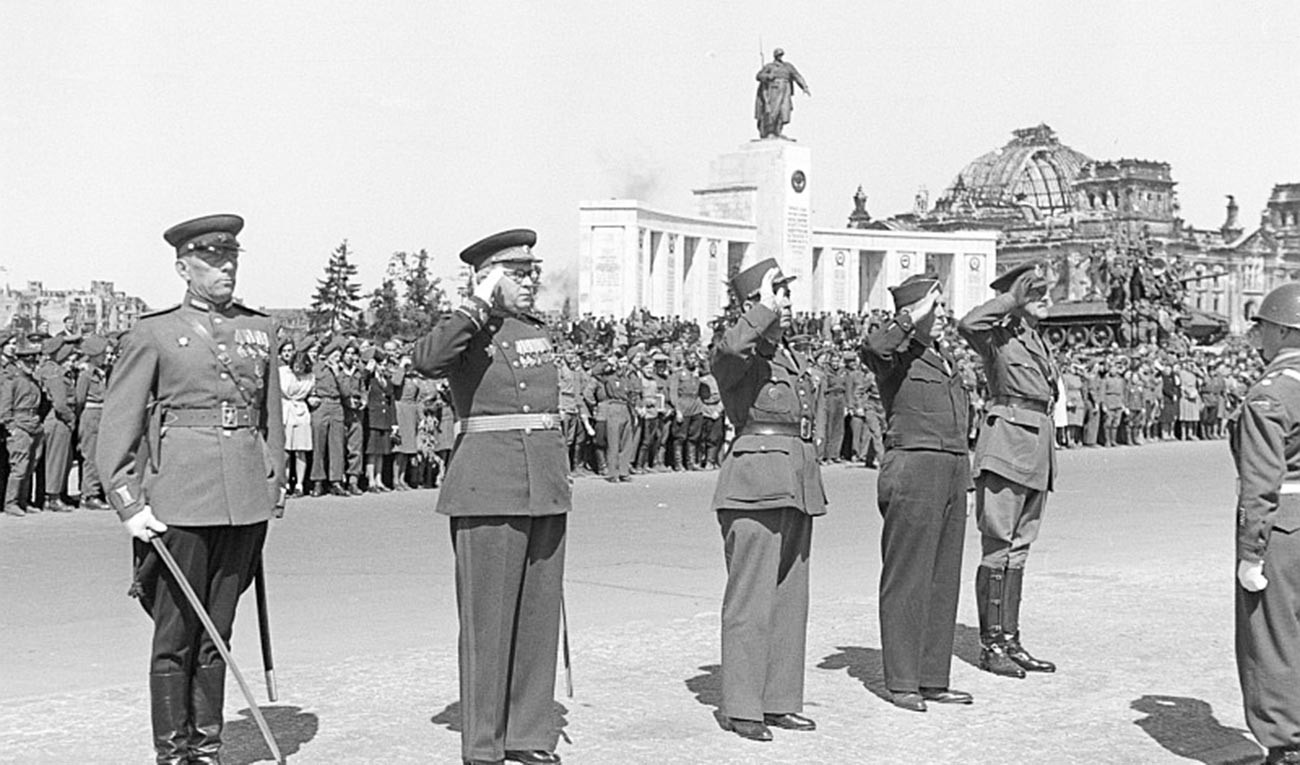

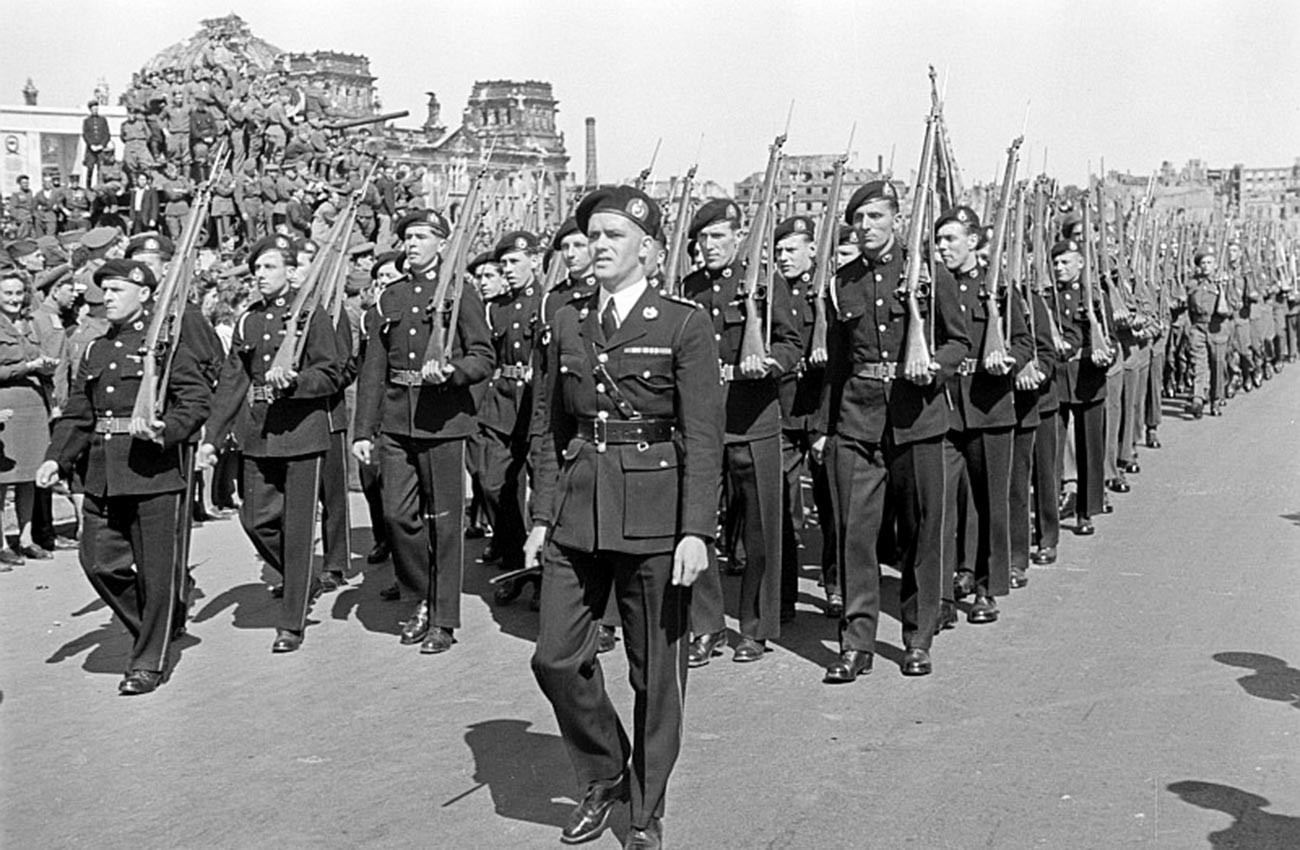
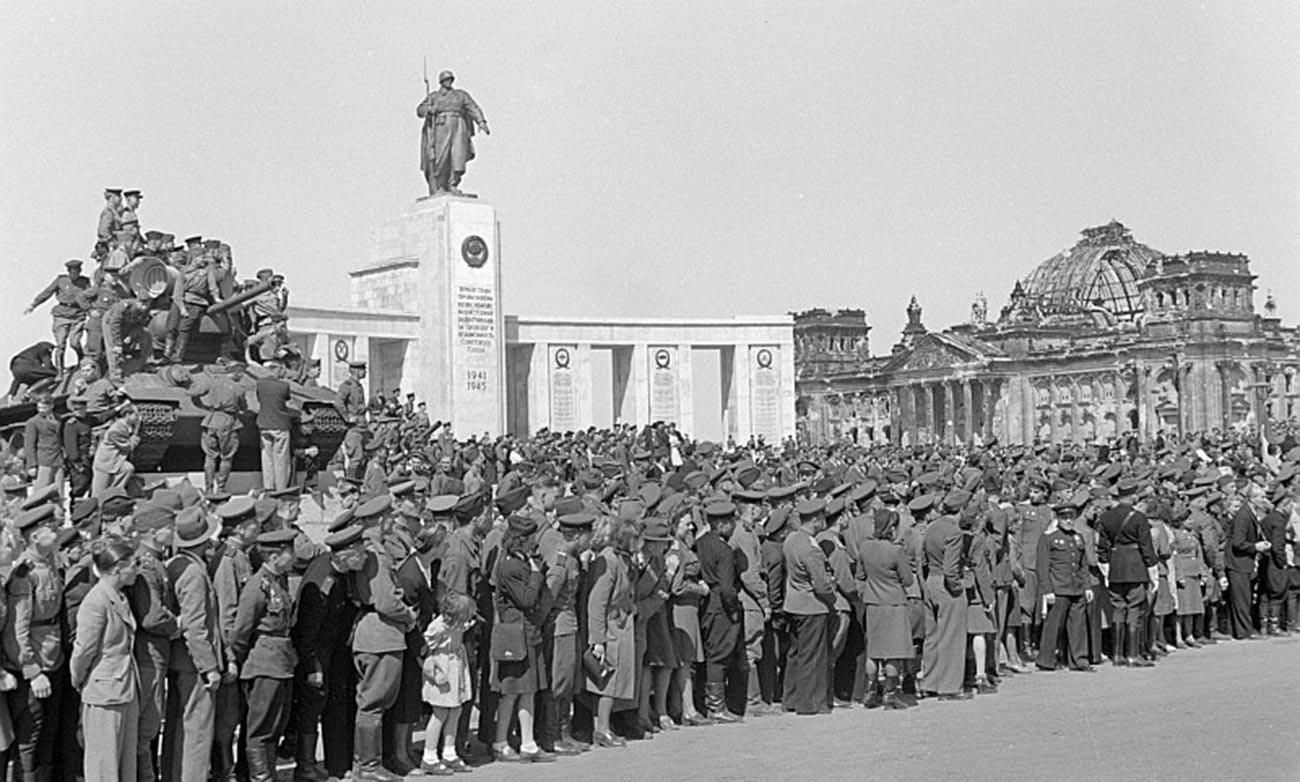
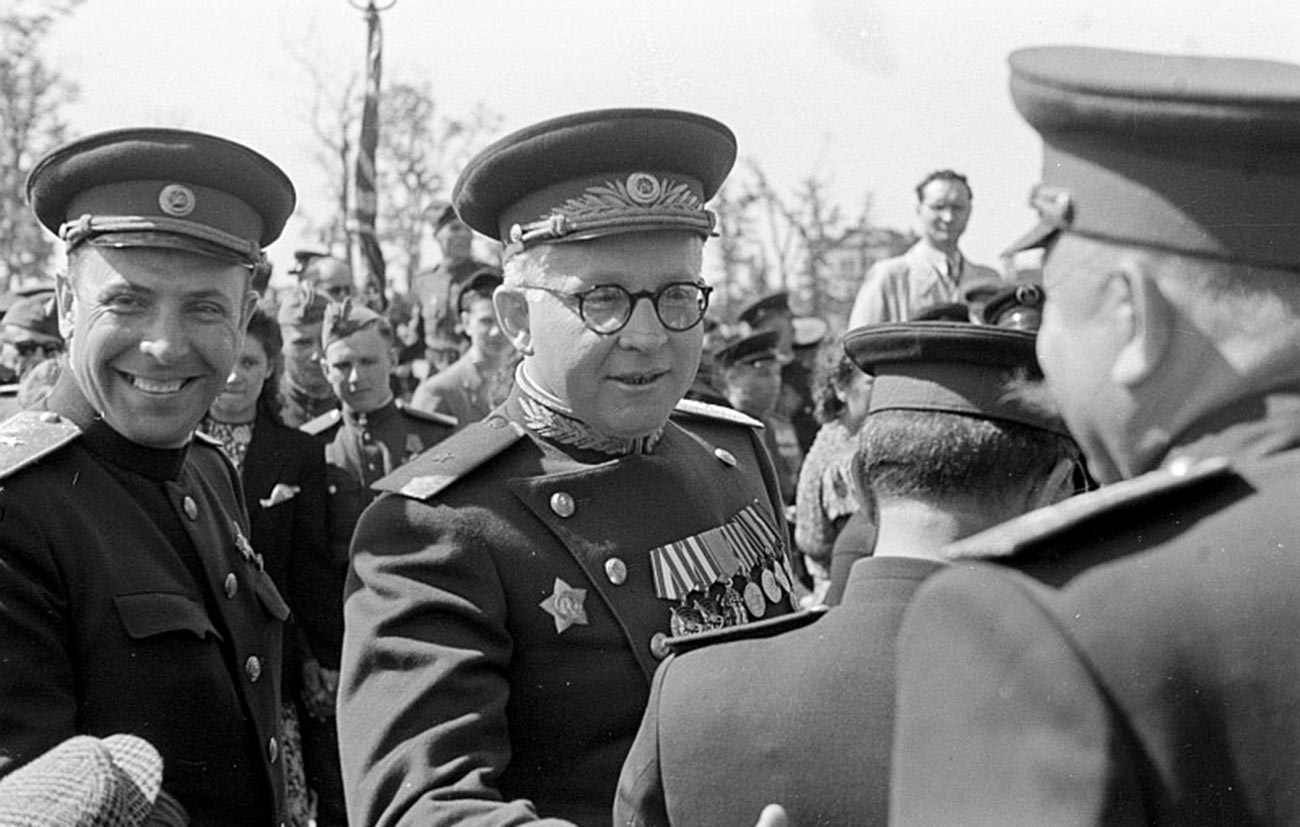
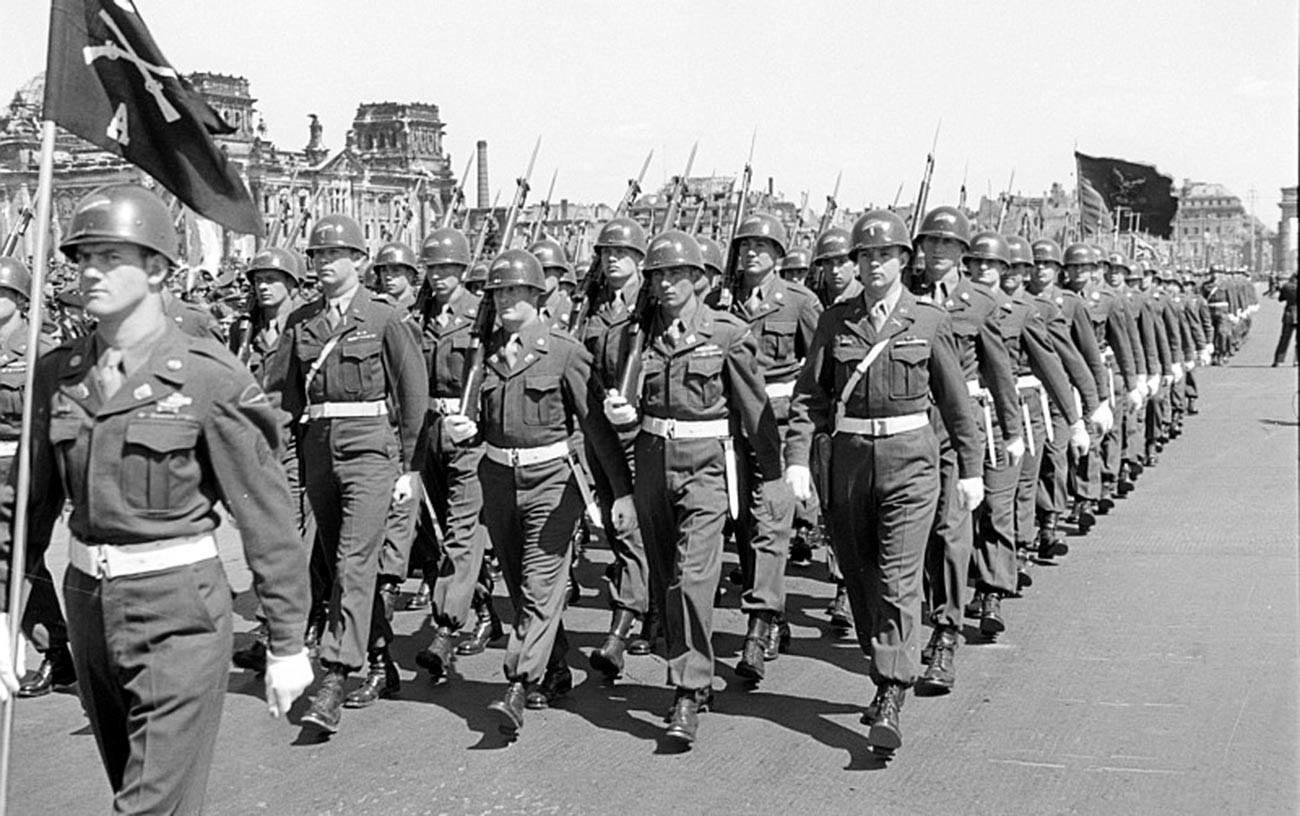

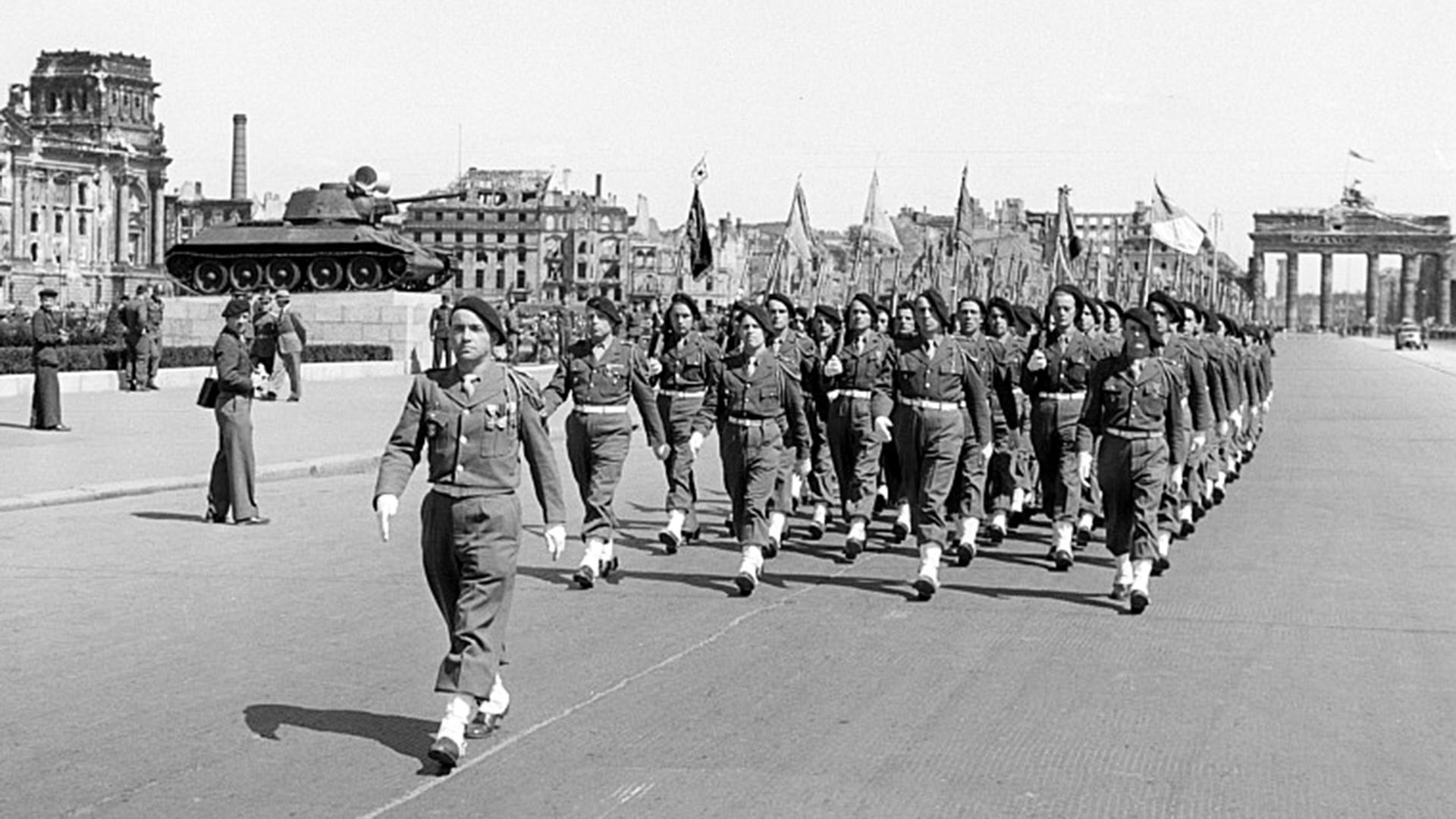
If using any of Russia Beyond's content, partly or in full, always provide an active hyperlink to the original material.
Subscribe
to our newsletter!
Get the week's best stories straight to your inbox